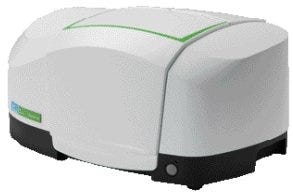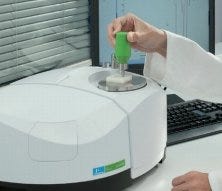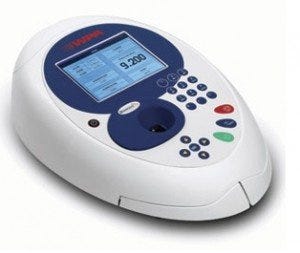USP Compliance of Pharmaceutical Labs
Absorption spectroscopy is an important analytical chemistry technique used in pharmaceutical analysis. The United States Pharmacopeia (USP) defines absorption spectroscopy as “the measurement of an interaction between electromagnetic radiation and the chemicals, or atoms, of a chemical substance.” To ensure the safety, quality and efficacy of compounds being produced, USP has developed standards and guidelines that must be observed by the pharmaceutical industry.
To meet these guidelines, labs must rigorously follow USP Reference Standards when performing absorption spectroscopy. From a quality control standpoint, absorption spectroscopy assists with compliance in detecting chemical elements within a sample. Instruments with data-transfer capabilities provide traceable reporting, compliant with Good Manufacturing Practices (GMP). There are two popular absorption spectroscopy techniques used in pharmacology labs: Fourier Transformation Infrared (FTIR) and UV/Visible Spectroscopy. How do these two technologies compare?
Fourier Transformation Infrared Spectroscopy
FTIR spectroscopy relies on measurements taken in the infrared and near-infrared wavelengths of the light spectrum of a liquid, solid or gas. This process collects data from a wide spectral range.

Spectrum Two IR from Perkin Elmer
Advantages of FTIR Spectroscopy
- Speed: higher signal-to-noise ratio through the simultaneous collection of wavelength information (Fellgett’s advantage) is accomplished in seconds
- Sensitivity: higher optical throughput (Jacquinot advantage) produces lower noise levels due to the increased sensitivity of detectors
- Calibration control of wavelength: improved wavelength accuracy (Connes advantage) allows the calibration of every scan
Each chemical compound demonstrates unique absorbance patterns or a chemical fingerprint which are useful in pharmaceutical analysis to ensure the composition, quantity and quality of raw ingredients and manufactured products.
Analyzing Raw Ingredients-Incoming Quality Control
Raw ingredients can be analyzed taking absorption measurements across the infrared spectrum. The resulting curve is compared to a known, pure compound. Differences in the observed spectrum indicate impurity in the sample.
 Analyzing Manufactured Products
Analyzing Manufactured Products
In much the same way that incoming quality control is performed, finished-good products are analyzed by FTIR to ensure purity and composition.
One caveat is that FTIR is unable to distinguish between chirality distinctions in optical isomers. Despite this limitation, FTIR is a common technique employed in pharmaceutical research and manufacturing laboratories to identify and qualify compounds for use.
Ultraviolet/Visible Spectroscopy
Ultraviolet/Visible (UV/Vis) light spectroscopy measures the absorbance of light in adjacent and visible ranges to identify the chemical fingerprint of an aqueous sample.
Advantages of UV/Vis Spectroscopy
- Easy to use: simple design of instrument employs the light from a specialized lamp to pass through the sample
- Fast results: quickly analyzes HPLC (high-performance liquid chromatography)_results when the instrument is properly calibrated
- Maintains sample integrity: UV/Vis is a non-destructive technique compared to FTIR and is highly sensitive in detecting organic compounds

Biowave DNA UV/Vis from Bichrom
UV/Vis spectroscopy can be used in the manufacturing process to identify contaminants within a substance or measure the kinetics of a reaction.
Identifying contaminants: Many organic compounds will absorb light in a particular region of the UV spectrum and contaminants can easily be detected and quantified with a single measurement.
Kinetics of a reaction: Small molecule pharmaceuticals can be modified by adding chemicals to a solution containing the drug in order to change the absorbance properties of the compound. For example, diazepam can easily be quantified through the addition of small amounts of sulfuric acid. The change in absorbance at 284 nm is proportional to the amount of diazepam in solution. Thus, simple and cost-effective assays can be designed for quantitative analysis of compounds.
Biologics, genetically engineered proteins from human genes, have opened a new avenue for UV/Vis spectrometers in the pharmaceutical industry. These compounds are purified from a complex cellular solution using HPLC by separating a complex solution into individual components. Each component elutes from a chromatography column at a different rate based on its chemical properties. UV/Vis spectrometers can detect and identify the unique footprint of the desired biologic, which allows laboratory personnel to obtain a purified compound.
Growth in Pharmaceutical Research
Our discussion delineates the advantages and the pharmaceutical applications of FTIR and UV/Vis spectroscopy techniques. Growing research in the pharmaceutical industry and the issue of compliance will compel manufacturers to create innovative instruments that echo the demands of increased efficiency and accuracy in spectroscopy instruments.
Click here to learn more about infrared spectrophotometers.



